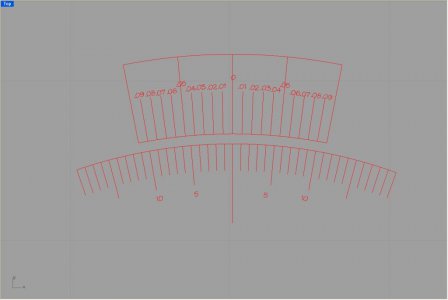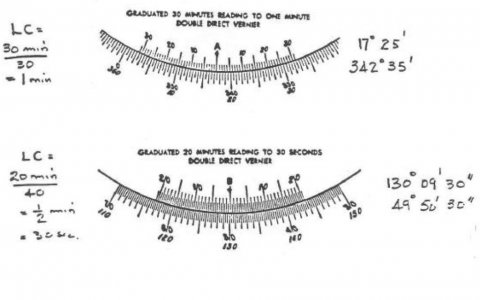-
Welcome back Guest! Did you know you can mentor other members here at H-M? If not, please check out our Relaunch of Hobby Machinist Mentoring Program!
You are using an out of date browser. It may not display this or other websites correctly.
You should upgrade or use an alternative browser.
You should upgrade or use an alternative browser.
Vernier indexer
- Thread starter Galileu
- Start date
- Joined
- Mar 24, 2011
- Messages
- 108
Hi,
I would suggest a different approach. I would make a 60 hole disk, spaced 6*, and would provide the vernier in the locking pin. The locking pin would have 6 possible possible positions spaced at 5*, that is, exactly, spanning 5 disk positions. This arrangement would permit 1* increments and I'm sure I have seen something similar posted somewhere.
Best regards,
José
I would suggest a different approach. I would make a 60 hole disk, spaced 6*, and would provide the vernier in the locking pin. The locking pin would have 6 possible possible positions spaced at 5*, that is, exactly, spanning 5 disk positions. This arrangement would permit 1* increments and I'm sure I have seen something similar posted somewhere.
Best regards,
José
- Joined
- Mar 24, 2011
- Messages
- 108
Gordon,
Here is something similar to what I tried to describe:http://www.toolsandgarages.com/index.php?topic=206.0
José
Here is something similar to what I tried to describe:http://www.toolsandgarages.com/index.php?topic=206.0
José
- Joined
- Apr 6, 2011
- Messages
- 2,082
A nice thing about a metric tape measure is that the cms (centimeters) are divided up into mms (millimeters) making it easier to make a shorter vernier scale over either 1 cm or perhaps 2 cm. Over 1 cm the vernier scale only need be 9mm long and 18mm long over 2 cm.
Has anyone seen an inch tape that was divided into tenths or twentieths instead of sixteenths and thirty seconds?
Not a "tape" but I do have a couple of Starrett rules that are divided up into tenths. They make such flexible rules in many lengths. http://www.starrett.com/metrology/m...ules-straight-edges-parallels/Precision-Rules
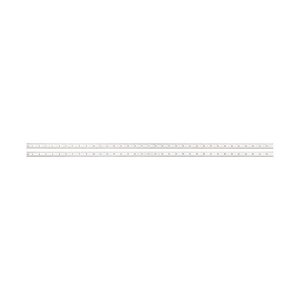
Really not trying to be a smart alec :biggrin:
-Ron
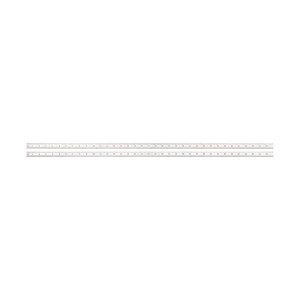
- Joined
- Jan 1, 2011
- Messages
- 305
José,
Those that do have an indexer - how much did it cost and when?
Gordon
CDCO has this vernier spin index that does 360 degrees, one at a time, for 45 bucks:
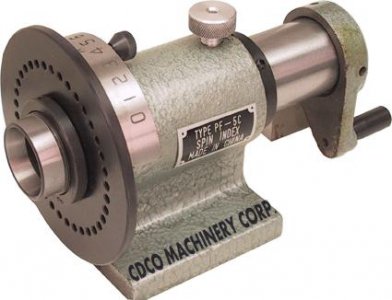
I got mine new some years ago for a trifle less than that.
And, indeed, I also have a 6-inch Starrett rule that is graduated in inches by tenths and fiftieths.
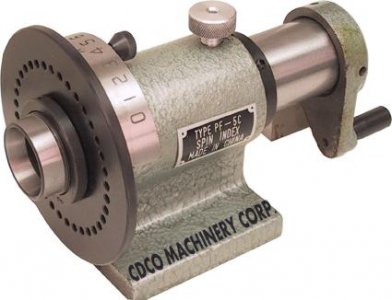
I am not sure of the practical application of all this but I do find it interesting. The function of the transit base is obviously to layout buildings or roads accurately and is integral to the device. The problem with the standard spin index is you can't do any thing better than 1 degree, and of course the need arises often for odd numbered divisions. However even if you could add a vernier scale to it, could you replicate it multiple times accurately enough to make it viable as opposed to a true dividing head? Maybe so. Side note Gordon, my mother was born in Glamsbjerg on Fyn.
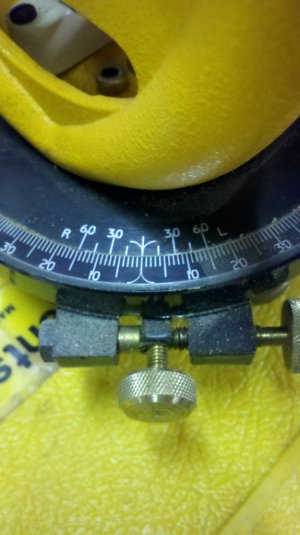



I imagine more importantly is understanding the process of building a Verier scale so if you do make your own rotary table or the like you can incorporate it in. Found this interesting PDF on line, I didn't know Vernier was a person. The YouTube video says "not available in your country", bummer. http://homepage.smc.edu/kennedy_john/VERNIERSCALE.PDF
Even my most basic rotary table has a vernier setup. I did get to thinking though, you could easily add a vernier scale to just about anything with a few minutes in cad. Just knowing the diameter of your scale whether a rotary table or lathe compound etc. I did a quick drawing based on a 6" diameter which could represent a small rotary table and it could be printed on card stock, labels, or even magnetic sheets. To the next level is engraved on a small piece of plastic or brass.